SLRs are so popular as they allow a flexibility
to use many different and even very special lenses. Here is clearly
where
Nikon and Canon dominate the professional market. We think we now own
a set of Nikon lenses that will work for us for some time to come.
Good time to talk about our lenses and why we use them.
Here is an article
about our Canon Lenses.
Why Zooms?
In our work we most often use zoom lenses. 30 years
ago we did not even think of touching a zoom lens (we used mainly two
Nikon F2s and owned (still have them) prime lenses from 20-200mm).
Why zooms today?
- Zooms improved a lot over the last 30 years
- We try to minimize lens changes as this may introduce dust into
out DSLRs
- Zooms are flexible
- We may be a bit lazy :-)
But we try to stay away from zoom lenses with a huge focal range as
this means that these lenses are either heavy and expensive or of inferior
quality. Why expensive Lenses?
High quality zooms are expensive especially if they
spot f/2.8 and fixed aperture. We find that the image quality is most
of the time limited by the lens and hardly just by the camera. Even
our 2.7MP Nikon D1 showed the quality of better lenses. But in the
end the "right" lens will be a compromise dictated by:
- Price
- Weight
- Size
- Maximum aperture
- Optical quality
We would rather use fewer lenses than buying cheap ones. This does
not mean that some lenses with smaller maximum aperture may save you
good money and still getting good results.
Third Party lenses
The fact that we
only cover Nikon lenses here reflects our personal choice and does
not mean that that lenses made by third party manufactures may not
be very good indeed. One main reason for us buying Canon or Nikon
glass is the consistency in terms of color rendering. We tested a few
third party lenses for our Nikon cameras and they seemed to have different
color characteristic.
Lens distortions
The more the lenses range into the wide angle area the more you will
notice lens distortions. Some of them can easily be corrected by tools
like PTLens.
Core Lenses (Prime lenses)
Nikkor 50mm f/1.4
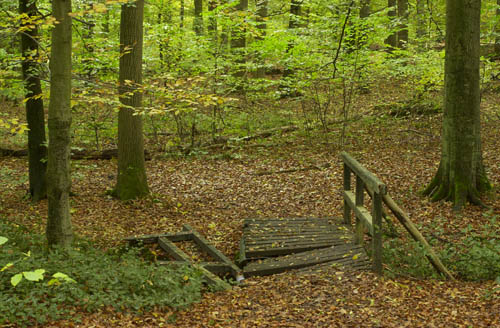
German forest (Nikon D1 + Nikkor 50mm f/1.4D)
- Great lens but not often used by us (what a shame actually).
Core Lenses (Zooms)
With only the following 2 lenses we could go a long
way:
Nikkor AF-S 28-70mm f/2.8
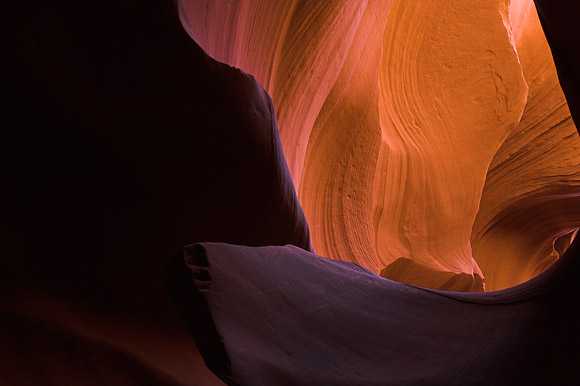
Lower Antelope Canyon (Nikon D2x + AF-S 28-70mm f/2.8)
If we needed to use only one lens this
might be our choice. We are not that much into wide angle photography
and so this lens is even on a D2x with its 1.5x multiplier the widest
we need most of the time. But sometimes you may want a more wide angle
zoom (see below).
Pro
- Good range
- Good optical quality
- Bright viewfinder image
Con
- Expensive
- Big and heavy compared to other zooms of that range
Nikkor AF-S 70-200mm f/2.8L VR
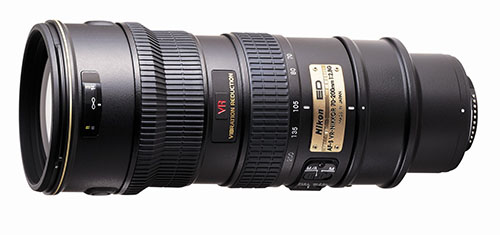

Junk Yard (Nikon D2x + AF-S 70-200 VR)
This is our most used lens. You can buy
this lens also without image stabilization but then you need a tripod
way more often. The old AF-S 80-200mm f/2.8 is a first rate lens we
own too but misses VR.
Pro
- Good optical quality
- VR works and helps
- Bright viewfinder image
Con
- Expensive
- Big and heavy compared to other zooms of that range
Alternatives
AF-S 80-200mm F/2.8L
- Great lens but at 200mm you may want to have IS
Longer Glass
The range from 42mm to 300mm effective (because of Nikon's 1.5 multiplier)
is very fine for all landscape work. But even adding a 1.4x tele extender
to
the
70-200mm
lens will
not
be enough to capture birds (even large birds like Egrets and Pelicans)
or other wildlife.
Nikkor AF-S 300mm f/4
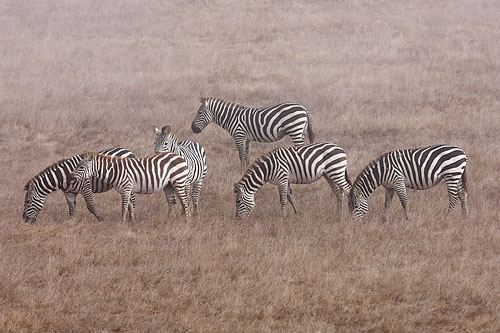
Zebras at Hwy 1 in fog (Nikon D2x + 300mm f/4)
From the beginning
we planned to use it with the 1.4x extender because you can get
a very decent 280mm
from
the
70-200mm
plus the
1.4x but the 300mm would be a 420 with the 1.4x (actually effective
630mm, not bad!).
Pro
- Good optical quality without extender
- reasonable priced for a 300mm and f/4
Con
- Slow focusing with the 1.4x extender
- As expected the 1.4x degrades image quality
Wider Angle
As mentioned before
we are not using that often extreme wide angle. But the 28mm
may not always cut it. In these situations we use: Nikkor AF-S 17-35mm f/2.8
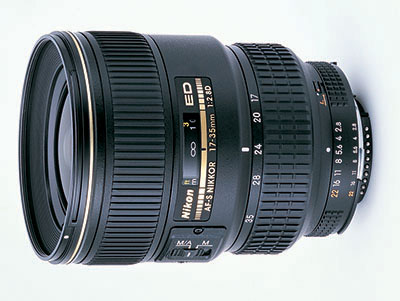
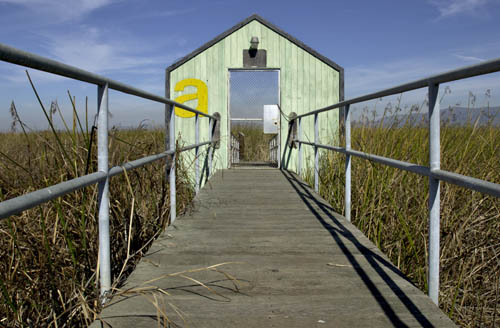
Alviso Gate (Nikon D1 + AF-S 17-35mm f/2.8)
Pro
- Optical quality excellent for a wide angle zoom (some claim that
this maybe one of the finest wide angle zooms available for all
cameras)
- Great contrast
Con
Nikkor AF-S 12-24mm f/4
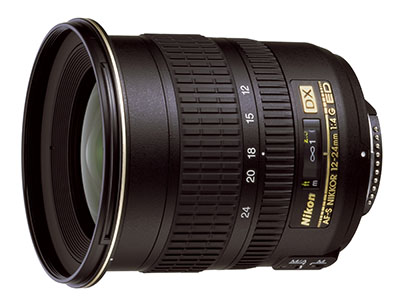
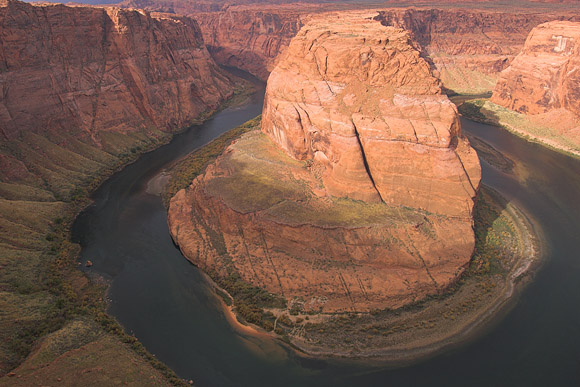
Horseshoe Bend (Nikon D2x + AF-S 12-24mm f/4)
Note: We do not own this lens but
used it for some shots and were quite pleased
Pro
- Pretty good for this range
Con
Single Travel Lens for the Nikon
If
you want to travel light you may want to use only one lens
Nikkor
AF-S 24-120 f/3.5-5.6 VR
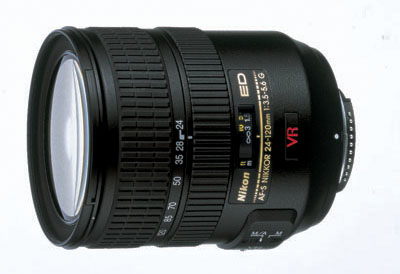
This category is very tough and you
have to be willing to cut corners in terms of image quality. We think
the 24-120 is a nice compromise as it features VR.
Pro
- Not that expensive
- Top range 24-120 (about 36mm - 180mm equivalent on the D2x)
- VR helps
Con
- Not a lot experience right now (will fill in here later)
Getting Closer (Macro Lenses)
We always like to use macro lenses for close ups
(not really 1:1 macros).
Micro Nikkor 105mm f/2.8
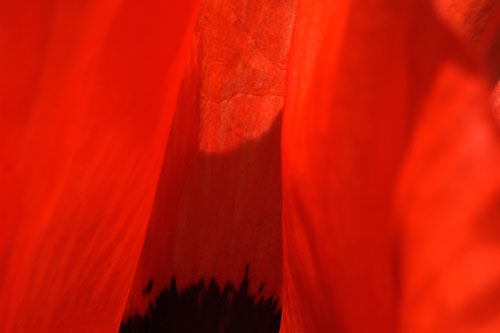
Red Giant Poppy (Nikon D1 + Micro Nikkor 105mm)
We love this macro lens and won't want
to miss it a second when photographing flowers.
Pro
- Optical quality very good
- Good focusing distance
Con
Tele Converters
Tele converters are very useful tools. The 1.4x
does only degrade the image quality slightly (if used with good lenses
of course) while the 2x adds more softness. Also both extenders tend
to add CA (chromatic aberration) that is visible at high contrast
edges. We use the 1.4x way more often than
the 2x. We sometime hear that 1.4 would not make a big difference.
We cannot share this view as e.g. the difference between 200mm and
280mm is by no means minor.
Tele extenders add the following defects
to the optics:
- Lower sharpness (the 1.4x behave very well here)
- Add more chromatic aberrations
Getting the shot you want maybe more
important than dealing with slightly reduced image quality.
Read this essay:
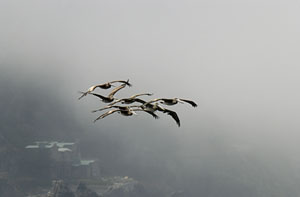
Pelican Attack
Note: We have quite a few more Nikon
prime lenses but they are hardly used. Probably a big mistake :-). |